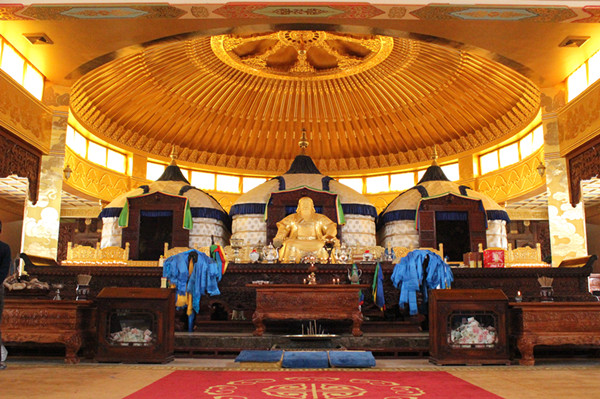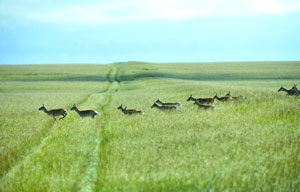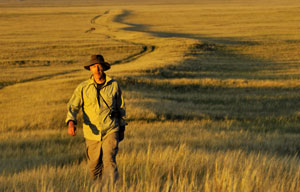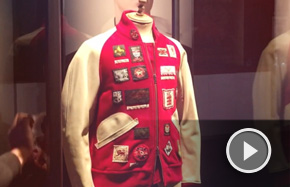Spring rite
 |
|
The majestic golden statue of Genghis Khan sits inside the palace of the mausoleum. Photos by Wang Kaihao / China Daily |
The Mausoleum of Genghis Khan turned into a ritual sanctuary recently as pilgrims celebrated the spring sacrifice. Wang Kaihao shares his experience in Ordos, Inner Mongolia.
Visitors to Inner Mongolia autonomous region will probably not understand the spirit of Mongolian ethnic group without seeing the Mausoleum of Genghis Khan in Ejin Horo Banner, Ordos.
I visited the mausoleum - considered one of the most sacred places in Mongolian culture - at the best time, coinciding with the annual spring sacrifice to honor the founder of Mongol Empire during the 13th century.
The event, which lasted from April 26 until May 3, attracted Mongolian people from all over the country and even overseas to gather at the site to pay homage.
I arrived at the mausoleum on April 29, the eve of the 21st day of the third month in Chinese lunar calendar. It's the most eventful day of the weeklong spring sacrifice. This day is called Tsagaansurek, which means "a white herd" in Mongolian.
Spring sacrifice is the biggest of the seasonal sacrifice. There are also 60 other special rituals throughout the year, including a grand ceremony during New Year.
I woke up before 7 am and made my way to the palace together with more than 70,000 pilgrims. Shortly after I left my lodge, I was caught in a massive traffic jam. But no one honked.
Although where Genghis Khan was secretly buried remains a major historical mystery in Mongols' history, this place which exhibits some of his belongings and portraits remains the utmost place in the heart of Mongolians since his death in 1227.
I followed the crowd to the main palace of the mausoleum shaped like three typical Mongolian yurts. Today's palace was built in 1956 on the original spot, after it was moved westward in 1939.
People leading the rituals are called Darhad, descendents of Genghis Khan's guards. In memory of Khan, an oil lamp has been burning uninterrupted for nearly 800 years under the meticulous protection of this group of people donned in special costumes and appeared to be very mysterious.

























